French sculptor, architect, and engraver Hugues Sambin created an exuberant ornamental style, which spread widely during the 16th Century.
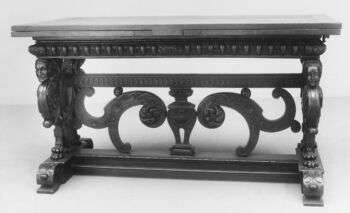
About His Life
Hugues Sambin was born around 1520 to a family of a menuisier. In his youth, he established himself in Dijon as a master craftsman (maître-menuisier), an architect, designer, and engineer. Then, in 1544, Sambin spent half the year working at the Palace of Fontainebleau, where he became acquainted with the works of Rosso Fiorentino and Francesco Primaticcio. These works represented the height of the mannerist movement under François I and undoubtedly influenced the young woodworker. Later, he incorporated the mannerist aesthetic into his decorative elements and building designs.
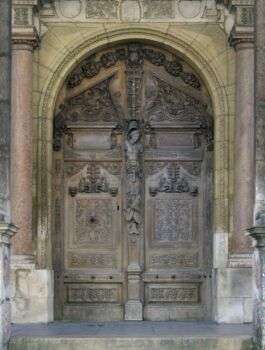
Image source: https://search.creativecommons.org/photos/9855fbfb-7c7f-4a81-be8f-4462f49ae521 by Quentin Verwaerde
Sambin’s Major Works
Sambin’s most important work is Oeuvre de la diversité des termes dont on use en architecture because it presents woodcut engravings, which were common for illustrated books of that time, particularly in the major printed treatises of the French Renaissance. However, the Oeuvre is not a “traité”(catalog) like those of Androuet du Cerceau and Philibert de l’Orme. Instead, Sambin’s work presents the author as “architecteur en la ville de Dijon”(architector in the city of Dijon). Additionally, his goal in publishing the volume was to make his images available to both artisans and architects.
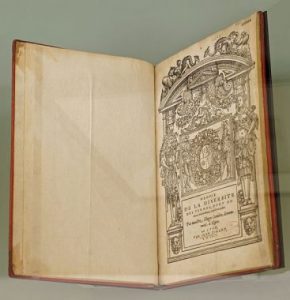
Image source: https://fr.wikipedia.org/
Features of Sambin’s Style
His furniture engraving and decorative sculptures gained inspiration from classical antiquity. Thus, he was largely responsible for the school of Sambin or Burgundian style, a provincial French Renaissance furniture style of the Rhone Valley area. Typically, Renaissance in its use of architectural elements, it was noteworthy for its massive construction and high-relief carved decoration. “Cabinet à deux corps” (bunk wardrobe) with carved human or allegorical figures is typical of the Burgundian style. Moreover, the style favored muscular satyrs, lion heads, and eagles, as opposed to the Ile-de-France school, which defined the style of Henry II’s furniture.
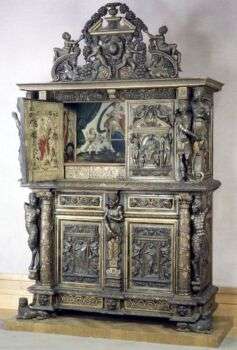
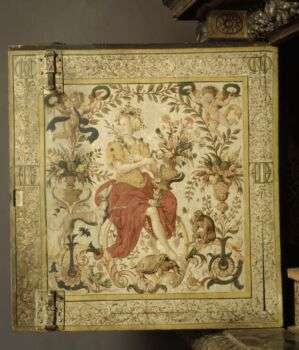
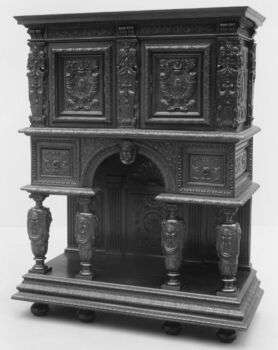
Info sources:
The Fairchild Books Dictionary of Interior Design
http://www.european-furniture-styles.com/Henry-II-Furniture.html
